-
 Bitcoin
Bitcoin $108,708.8110
0.60% -
 Ethereum
Ethereum $2,561.6057
1.91% -
 Tether USDt
Tether USDt $1.0001
-0.03% -
 XRP
XRP $2.2795
0.57% -
 BNB
BNB $662.2393
1.00% -
 Solana
Solana $153.1346
3.74% -
 USDC
USDC $1.0000
0.00% -
 TRON
TRON $0.2877
0.97% -
 Dogecoin
Dogecoin $0.1710
3.93% -
 Cardano
Cardano $0.5871
1.61% -
 Hyperliquid
Hyperliquid $39.6663
1.68% -
 Sui
Sui $2.9032
0.79% -
 Bitcoin Cash
Bitcoin Cash $496.1879
1.71% -
 Chainlink
Chainlink $13.5807
3.01% -
 UNUS SED LEO
UNUS SED LEO $9.0777
0.61% -
 Stellar
Stellar $0.2514
4.51% -
 Avalanche
Avalanche $18.1761
1.86% -
 Shiba Inu
Shiba Inu $0.0...01173
1.72% -
 Toncoin
Toncoin $2.8010
-4.23% -
 Hedera
Hedera $0.1594
3.21% -
 Litecoin
Litecoin $87.0257
-0.53% -
 Monero
Monero $319.1217
1.79% -
 Polkadot
Polkadot $3.3853
0.68% -
 Dai
Dai $0.9999
-0.01% -
 Ethena USDe
Ethena USDe $1.0003
0.02% -
 Bitget Token
Bitget Token $4.3420
-0.97% -
 Uniswap
Uniswap $7.3772
1.39% -
 Aave
Aave $286.6277
5.61% -
 Pepe
Pepe $0.0...09994
2.33% -
 Pi
Pi $0.4589
1.76%
How to use Parabolic SAR for Dogecoin
Parabolic SAR helps Dogecoin traders spot trend reversals, with dots below price signaling uptrends and above for downtrends.
Jul 07, 2025 at 02:50 am
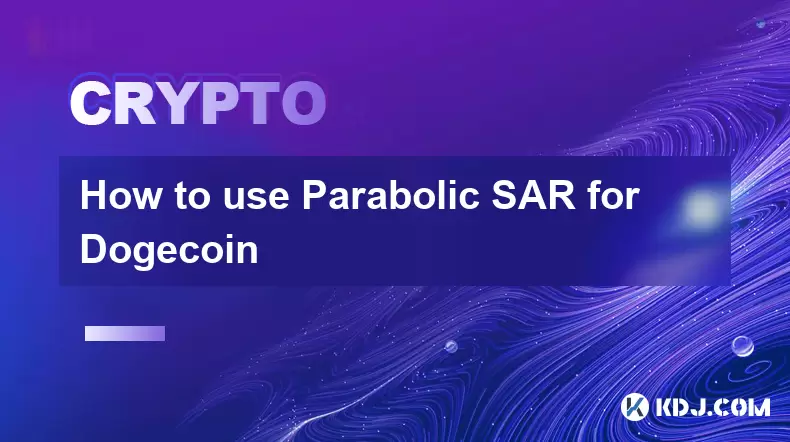
Understanding Parabolic SAR in Cryptocurrency Trading
The Parabolic SAR (Stop and Reverse) is a technical indicator used by traders to determine potential reversals in asset prices. In the context of Dogecoin trading, this tool can be particularly useful for identifying when an uptrend or downtrend might reverse, offering insights into entry and exit points. The Parabolic SAR appears on charts as a series of dots placed either above or below the price candles. When the dots are below the price, it indicates an uptrend; when they are above, it signals a downtrend.
This indicator works best in trending markets, which makes it relevant for volatile assets like Dogecoin. However, during sideways or choppy market conditions, Parabolic SAR may generate false signals. Traders must therefore combine it with other tools like moving averages or volume indicators to filter out misleading data.
Setting Up Parabolic SAR on a Dogecoin Chart
To begin using Parabolic SAR for Dogecoin trading, you need access to a charting platform that supports this indicator. Platforms such as TradingView, Binance, or CoinMarketCap Pro offer robust charting features. Here’s how to set it up:
- Open your preferred charting platform.
- Select Dogecoin (DOGE) as the trading pair, typically DOGE/USDT or DOGE/BTC.
- Navigate to the "Indicators" menu.
- Search for Parabolic SAR and add it to your chart.
- Customize settings if necessary — the default values are usually 0.02 acceleration factor and 0.2 maximum step.
Once applied, the Parabolic SAR will display as a series of dots around the price action. These dots flip sides when a reversal is detected, signaling potential changes in trend direction.
Interpreting Parabolic SAR Signals for Dogecoin
When using Parabolic SAR for Dogecoin, understanding the signals it generates is crucial. Here’s how to interpret them effectively:
- A buy signal occurs when the dots move from above the price to below it. This shift suggests that the downtrend has ended and an uptrend may be beginning.
- A sell signal is generated when the dots switch from below the price to above it, indicating that the uptrend is losing momentum and a downtrend could start.
It’s important to note that Parabolic SAR lags behind price movements, especially during rapid shifts. Therefore, relying solely on this indicator can result in late entries or exits. To improve accuracy, traders often wait for the candle to close before acting on a Parabolic SAR signal.
Combining Parabolic SAR with Other Indicators for Better Accuracy
Using Parabolic SAR alone may not provide sufficient confirmation for entering or exiting trades in Dogecoin. Combining it with other indicators enhances its reliability. Some effective combinations include:
- Moving Averages: Use the 50-period and 200-period Exponential Moving Averages (EMA) to confirm the trend direction. If the Parabolic SAR flips upward and both EMAs are rising, it strengthens the buy signal.
- Relative Strength Index (RSI): RSI helps identify overbought or oversold conditions. If the Parabolic SAR gives a sell signal but RSI is still in oversold territory, the reversal might not be strong enough to act upon immediately.
- Volume Indicators: An increase in trading volume when Parabolic SAR signals a reversal adds credibility to the trade. For example, if the dots flip below the price and volume surges, it's a stronger confirmation of an uptrend.
By integrating these additional tools, traders can filter out false signals and make more informed decisions when trading Dogecoin.
Executing Trades Based on Parabolic SAR Signals
Once you’ve confirmed a Parabolic SAR signal using complementary indicators, it’s time to execute the trade. Here’s a detailed breakdown of how to proceed:
- Identify the direction of the signal: Determine whether it's a buy or sell based on the position of the Parabolic SAR dots relative to the price.
- Set entry points: Enter the trade after the candle closes confirming the signal. Avoid entering prematurely as the market can quickly reverse.
- Place stop-loss orders: For long positions, place the stop-loss just below the last SAR dot. For short positions, place it just above the last dot. This allows room for minor price fluctuations while protecting against large losses.
- Manage take-profit levels: You can trail your profit target using the Parabolic SAR itself. As the dots move closer to the current price, adjust your take-profit accordingly to lock in gains.
It’s essential to monitor the chart regularly since Parabolic SAR updates dynamically with each new candle. Missing a reversal point can lead to missed opportunities or increased risk exposure.
Frequently Asked Questions
Q: Can Parabolic SAR be used for intraday Dogecoin trading?
Yes, Parabolic SAR can be applied to shorter timeframes like 15-minute or 1-hour charts for intraday Dogecoin trading. However, due to increased volatility, false signals are more common, so combining it with volume or support/resistance levels improves accuracy.
Q: Is Parabolic SAR reliable during high volatility in Dogecoin?
During high volatility, Parabolic SAR can generate frequent reversal signals, many of which may be false. It's advisable to use it alongside trend filters or volatility indicators like Bollinger Bands or Average True Range (ATR) to avoid premature exits.
Q: How does Parabolic SAR compare to MACD for Dogecoin trading?
While Parabolic SAR focuses on trend reversals and stop-and-reverse points, MACD measures momentum and trend strength. They serve different purposes, but together, they can enhance trade validation. For instance, a Parabolic SAR reversal combined with a MACD line crossing above the signal line reinforces a bullish setup.
Q: Should I adjust Parabolic SAR parameters for Dogecoin?
Default Parabolic SAR settings work well for most traders, but some tweak the acceleration factor (AF) and max step to suit their strategy. Increasing AF makes the indicator more sensitive, potentially generating more signals, which can be beneficial in fast-moving Dogecoin markets but also increases the chance of false alarms.
Disclaimer:info@kdj.com
The information provided is not trading advice. kdj.com does not assume any responsibility for any investments made based on the information provided in this article. Cryptocurrencies are highly volatile and it is highly recommended that you invest with caution after thorough research!
If you believe that the content used on this website infringes your copyright, please contact us immediately (info@kdj.com) and we will delete it promptly.
- Ethereum Price Eyes $2610 Breakout Amidst Institutional Inflows and 'Giga Era' Buzz
- 2025-07-07 20:30:12
- Tariff Deadline, Crypto Bull Run, and Trade Tensions: A Perfect Storm?
- 2025-07-07 20:30:12
- Bitcoin Wallet Hack? Coinbase Exec Sounds the Alarm on $8B Whale Movement
- 2025-07-07 18:30:12
- Mercado Bitcoin, Tokenization, and XRP Ledger: A Latin American Power Play
- 2025-07-07 18:30:12
- XYZVerse, Wall Street, and the Crypto Upswing: What's the Deal?
- 2025-07-07 19:10:12
- AI, Web3, and Communities: Building the Future Together
- 2025-07-07 19:10:12
Related knowledge
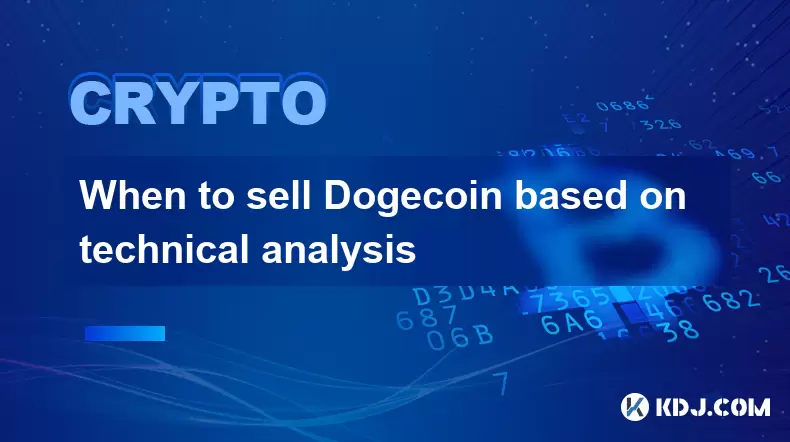
When to sell Dogecoin based on technical analysis
Jul 05,2025 at 07:34pm
Understanding the Basics of Technical AnalysisTechnical analysis is a method used by traders to evaluate and predict future price movements based on historical data, primarily price and volume. In the context of Dogecoin (DOGE) trading, technical analysis involves studying charts and using various indicators to identify patterns that may suggest future ...
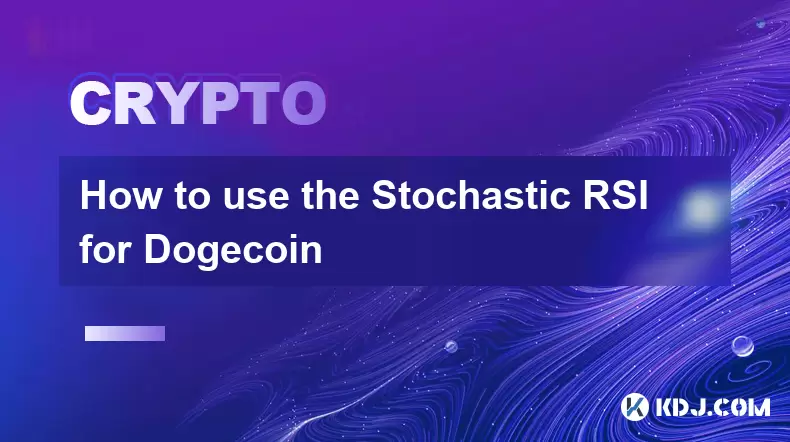
How to use the Stochastic RSI for Dogecoin
Jul 06,2025 at 03:14am
Understanding the Stochastic RSI IndicatorThe Stochastic RSI (Relative Strength Index) is a momentum oscillator that combines two well-known technical indicators: the RSI and the Stochastic Oscillator. It is widely used in cryptocurrency trading to identify overbought or oversold conditions, as well as potential reversal points. When applied to Dogecoin...
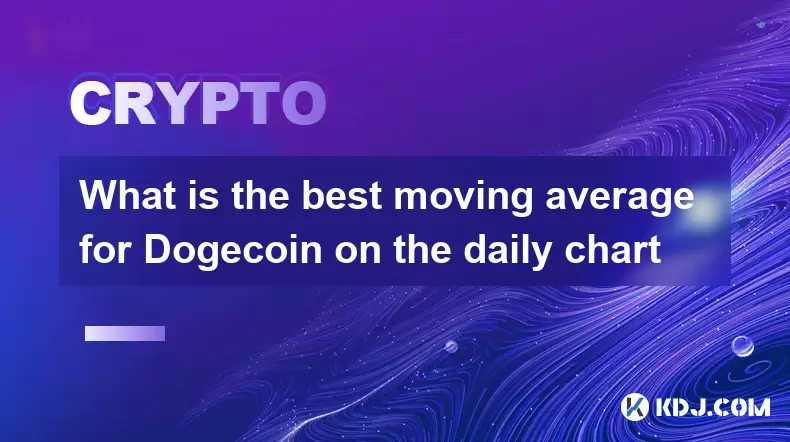
What is the best moving average for Bitcoincoin on the daily chart
Jul 06,2025 at 10:29am
Understanding Moving Averages in Cryptocurrency TradingMoving averages are among the most widely used technical indicators in cryptocurrency trading. They help traders identify trends by smoothing out price data over a specific time period. In the context of Dogecoin, selecting the best moving average depends on individual trading strategies and risk to...
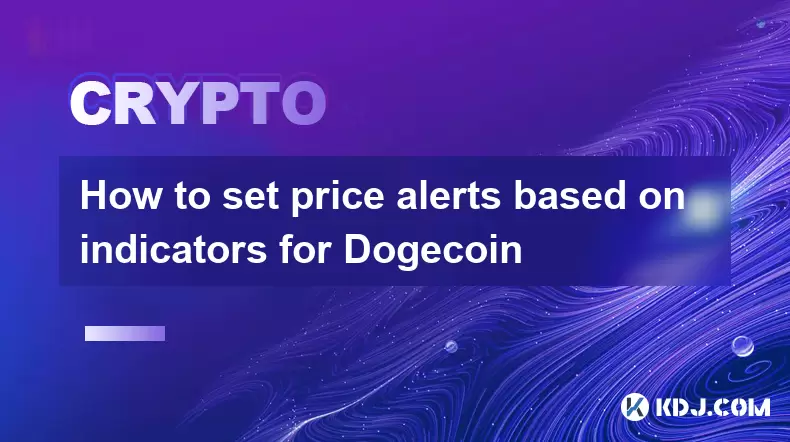
How to set price alerts based on indicators for Dogecoin
Jul 05,2025 at 07:32pm
Understanding Price Alerts and Their Relevance to DogecoinPrice alerts are notifications set by traders or investors to receive updates when a specific cryptocurrency, such as Dogecoin (DOGE), reaches a predefined price level. These alerts help users stay informed without constantly monitoring the market. For Dogecoin, which is known for its volatile na...
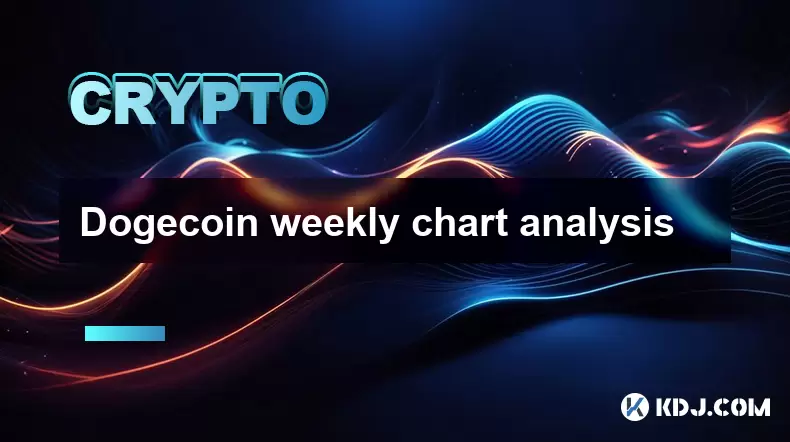
Dogecoin weekly chart analysis
Jul 07,2025 at 05:42pm
Understanding the Dogecoin Weekly ChartThe Dogecoin weekly chart is a crucial tool for traders and investors who want to assess long-term trends in the cryptocurrency market. Unlike daily or hourly charts, the weekly chart provides a broader perspective on price movements over extended periods. This makes it especially useful for identifying major suppo...
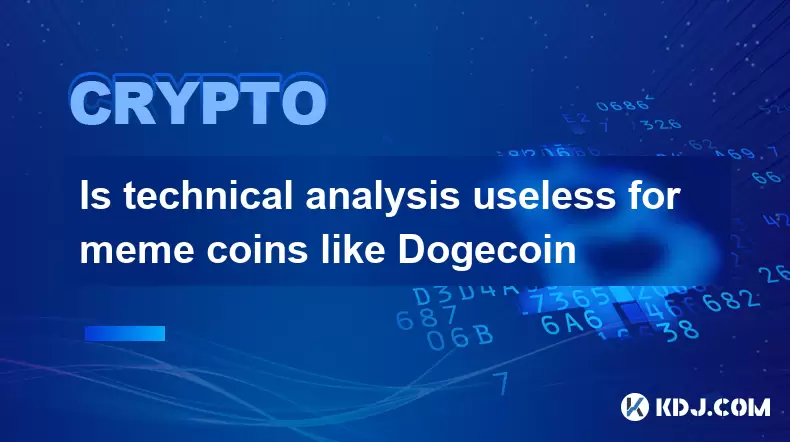
Is technical analysis useless for meme coins like Bitcoincoin
Jul 05,2025 at 07:33pm
Understanding Meme Coins and Their Unique NatureMeme coins, such as Dogecoin, derive their value not from technological innovation or utility but from community sentiment and social media trends. Unlike traditional cryptocurrencies like Bitcoin or Ethereum, which have clear use cases and development roadmaps, meme coins thrive on viral attention and onl...

When to sell Dogecoin based on technical analysis
Jul 05,2025 at 07:34pm
Understanding the Basics of Technical AnalysisTechnical analysis is a method used by traders to evaluate and predict future price movements based on historical data, primarily price and volume. In the context of Dogecoin (DOGE) trading, technical analysis involves studying charts and using various indicators to identify patterns that may suggest future ...

How to use the Stochastic RSI for Dogecoin
Jul 06,2025 at 03:14am
Understanding the Stochastic RSI IndicatorThe Stochastic RSI (Relative Strength Index) is a momentum oscillator that combines two well-known technical indicators: the RSI and the Stochastic Oscillator. It is widely used in cryptocurrency trading to identify overbought or oversold conditions, as well as potential reversal points. When applied to Dogecoin...

What is the best moving average for Bitcoincoin on the daily chart
Jul 06,2025 at 10:29am
Understanding Moving Averages in Cryptocurrency TradingMoving averages are among the most widely used technical indicators in cryptocurrency trading. They help traders identify trends by smoothing out price data over a specific time period. In the context of Dogecoin, selecting the best moving average depends on individual trading strategies and risk to...

How to set price alerts based on indicators for Dogecoin
Jul 05,2025 at 07:32pm
Understanding Price Alerts and Their Relevance to DogecoinPrice alerts are notifications set by traders or investors to receive updates when a specific cryptocurrency, such as Dogecoin (DOGE), reaches a predefined price level. These alerts help users stay informed without constantly monitoring the market. For Dogecoin, which is known for its volatile na...

Dogecoin weekly chart analysis
Jul 07,2025 at 05:42pm
Understanding the Dogecoin Weekly ChartThe Dogecoin weekly chart is a crucial tool for traders and investors who want to assess long-term trends in the cryptocurrency market. Unlike daily or hourly charts, the weekly chart provides a broader perspective on price movements over extended periods. This makes it especially useful for identifying major suppo...

Is technical analysis useless for meme coins like Bitcoincoin
Jul 05,2025 at 07:33pm
Understanding Meme Coins and Their Unique NatureMeme coins, such as Dogecoin, derive their value not from technological innovation or utility but from community sentiment and social media trends. Unlike traditional cryptocurrencies like Bitcoin or Ethereum, which have clear use cases and development roadmaps, meme coins thrive on viral attention and onl...
See all articles

























































































